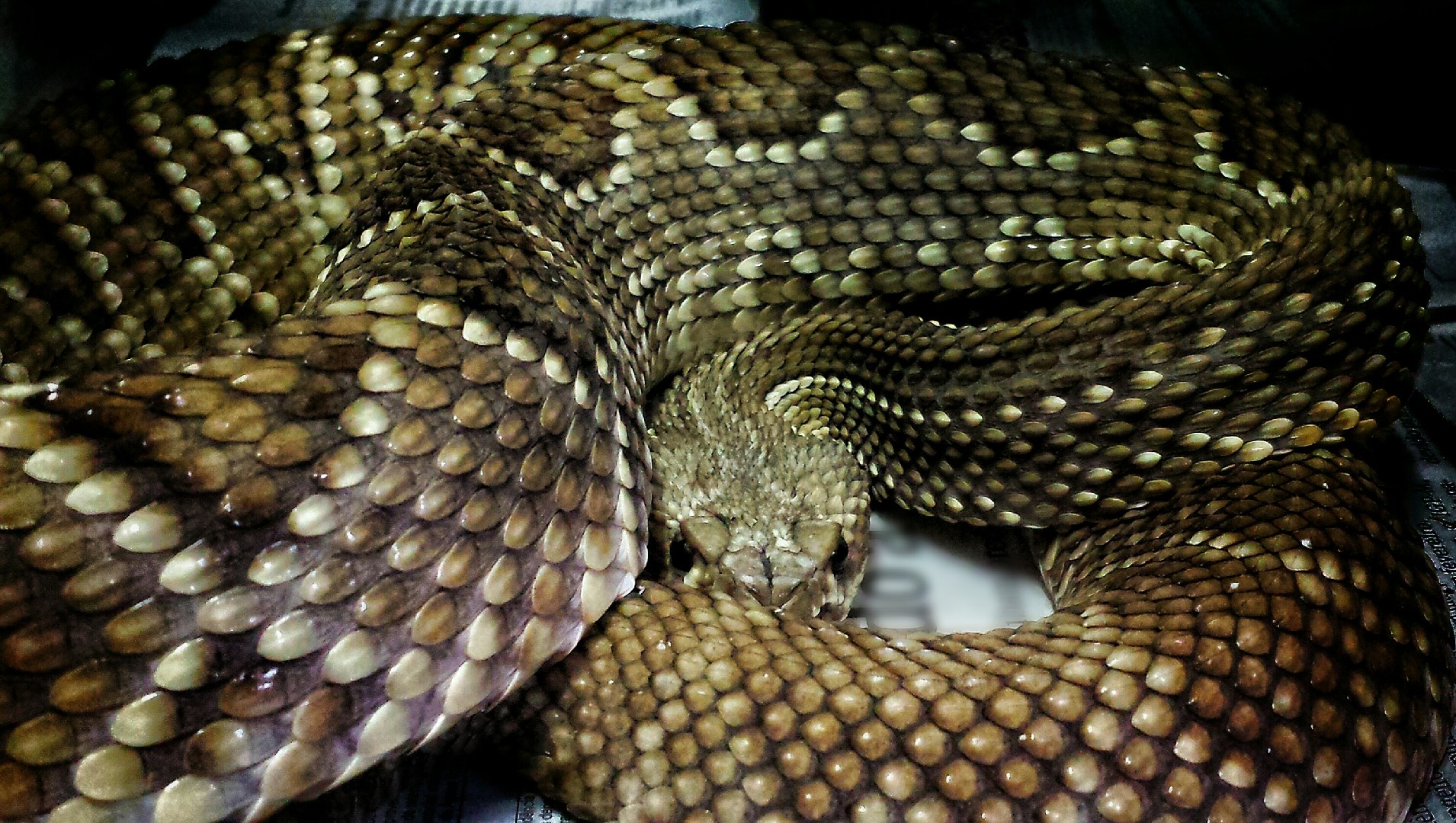South american rattlesnake
A species of Rattlesnakes, Also known as Neotropical rattlesnake, Cascabel rattlesnake Scientific name : Crotalus durissus Genus : Rattlesnakes
South american rattlesnake, A species of Rattlesnakes
Also known as:
Neotropical rattlesnake, Cascabel rattlesnake
Scientific name: Crotalus durissus
Genus: Rattlesnakes
Content
Description General Info
 Photo By Leandro Avelar , used under CC-BY-SA-4.0 /Cropped and compressed from original
Photo By Leandro Avelar , used under CC-BY-SA-4.0 /Cropped and compressed from original Description
Klauber (1997) gives two maximum lengths: 636 mm for the largest measured specimen, and 684 mm as the greatest value from a report believed to be reliable. 
General Info
Lifespan
15-20 years
Diet
South american rattlesnake is a carnivorous species, primarily feeding on small rodents. Opportunistic hunting tactics enable it to consume diverse prey such as birds, amphibians, and reptiles, besides its preferential mammalian diet.
Appearance
South american rattlesnake is a robust, medium to large-sized snake with a distinct, triangular head. Its scales are immensely rough and keeled, providing a unique texture. Predominantly yellowish-brown or olive-green, the snake often exhibits darker crossbands or rhomboidal blotches. Males typically possess thicker tails than females. South american rattlesnake's most striking feature is its rattle, made from interlocking segments, at the end of its tail.
Behavior
South american rattlesnake manifests nocturnal, solitary behavior, typically utilizing active hunting strategies when preying on mammals. This species displays a distinctive defensive 'rattle' behavior, achieved through the shaking of specialized tail segments as a warning to potential threats. South american rattlesnake is also known for its territorial demeanor, particularly males during the breeding season.
Scientific Classification
Phylum
Chordates Class
Reptiles Order
Lizards and snakes Family
Vipers Genus
Rattlesnakes Species
South american rattlesnake